Published by Chris Townsend
Last updated Nov, 21 2025

Overseas relocation can bring about feelings of excitement and anxiety. While uprooting your life and moving to another country is exhilarating, getting your personal belongings to your new home over the Atlantic Ocean or the Pacific can prompt a lot of stress. However, the more you prepare, the easier your international relocation will be. Not only do you have to prepare logistically, but you also need to prepare financially.
This brings us to the question: How much does shipping a container overseas cost? How much does it cost to send a container overseas? While the cost to ship a container overseas varies based on several factors, the average cost ranges from $1,300 to $3,200 for a 20-foot container.
Though, there is much more to it than averages and cost estimates. So, to help put things in perspective, we’ve assembled a table that outlines the shipping container overseas costs to various places across the globe. The data is based on port-to-port transport out of New York, with household goods worth about $50,000 in amount.
Overseas Container Shipping Rates (From the USA)
| Destination Port City (& Country) | 20 Ft. Container | 40 Ft. Container |
| Montreal, Canada | $1,260 | $1,880 |
| London, United Kingdom | $1,190 | $1,770 |
| Hamburg, Germany | $1,170 | $1,750 |
| Busan, South Korea | $745 | $1,110 |
| Tokyo, Japan | $860 | $1,290 |
| Sydney, Australia | $2,780 | $4,175 |
| Rio de Janeiro, Brazil | $1,550 | $2,310 |
| Dublin, Ireland | $1,340 | $2,000 |
| Cape Town, South Africa | $2,500 | $3,800 |
| Jakarta, Indonesia | $1,190 | $1,775 |
Overseas container shipping rates
Again, these numbers are just estimates. Since each overseas relocation is unique, you’ll want to obtain a quote to get the most accurate pricing. Container shipping rates may vary.
Mover Vs. Freight Forwarder
When you’re comparing rates for overseas receptacle hauling, whether to Europe or other parts of the world, you must be aware of your needs and how they will impact your final price. First, you want to understand the difference between an international mover and a freight forwarder. Also called a non-vessel operating carrier (NVOCC), freight forwarders provide similar services as movers but typically do most of their work with commercial shipping for businesses.
International movers, on the other hand, have the ability to coordinate your entire overseas relocation for you, including packing, pick-up, transport, and delivery. Some other key things to understand when determining the cost of shipping a container overseas are as follows.
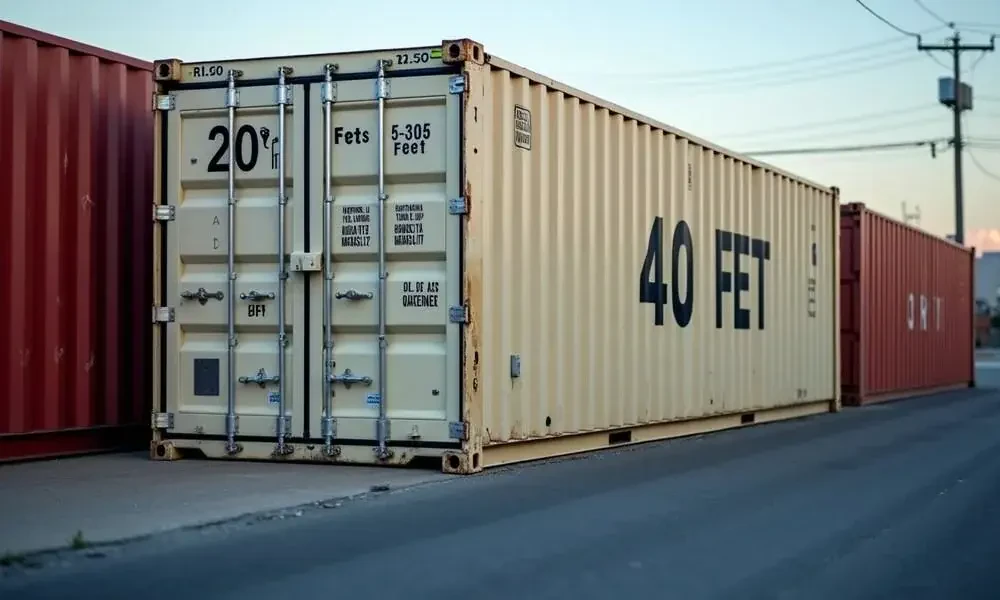
Standard Container Sizes
While there are numerous intermodal container sizes and types, two sizes are standard: 20-foot and 40-foot. We listed rates for these two common-size dimensions above to help give you an idea of the relative costs of each. Other variations you may come across include 40 ft. high-cube, 45 ft. high-cube, and refrigerated containers.

20-Foot
A standard 20-foot container can typically house the contents of a one- or two-bedroom home or a car and a few boxes. They can fit properties with a floor space of 146 square feet and have a total internal volume of 1,169 cubic feet. The measurements are 19’10.5” long, 8’ wide, and 8’6” high, and they can carry about 61,000 pounds of goods.

40-Foot
A standard 40-foot shipping container, on the other hand, can generally fit the contents of a three- or four-bedroom home, about 320 square feet of floor space, or a standard two-bedroom plus a car. With a total internal volume of 2,385 cubic feet, the measurements are 40’ long, 8’ wide, and 8’6” high. They can contain around 58,000 pounds of goods, less than a 20-foot.
While 40-foot are longer and have twice the volume of their 20-foot counterparts, they cannot hold twice the cargo weight because of the weight of the container itself.
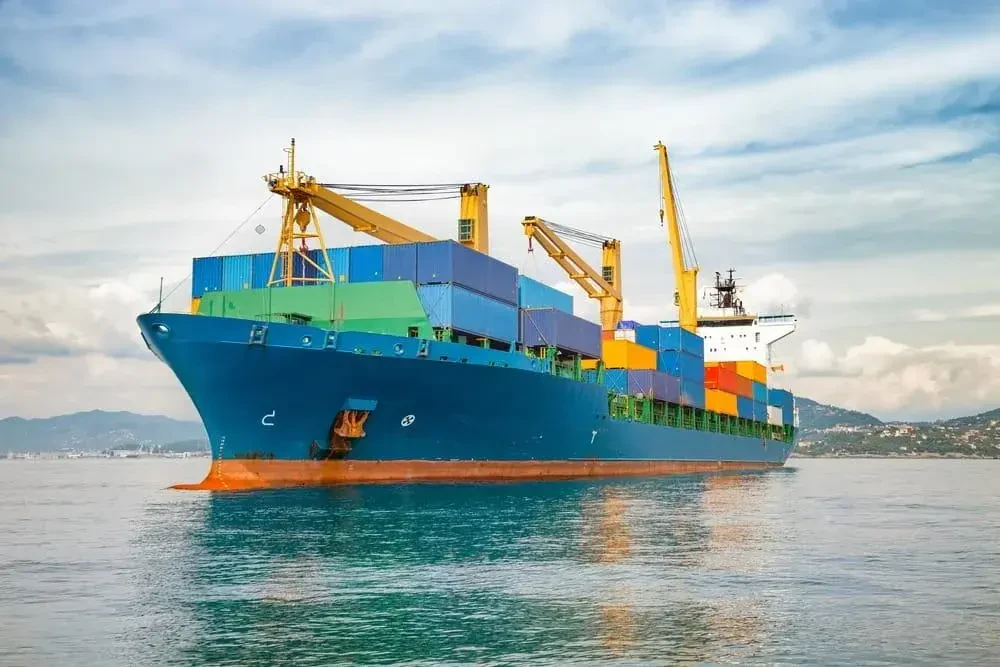
Container shipments to different destinations
FCL vs. LCL
Some other terms you’ll need to be aware of when shipping overseas are full container load (FCL) and less than container load (LCL). The volume of your shipment will determine whether you need an FCL or an LCL and your final shipping costs.
- Less than container load simply refers to shipments or moves that do not necessitate an entire container (20ft or 40ft). However, Most ocean container carriers impose a minimum shipment volume, which will vary depending on the shipping company. In addition to sharing the space in the container with someone else, you also share the cost. Frequently, this option is the most cost-effective for smaller shipments, but it may sometimes make the most sense and be cheaper to just book the full container.
- Full container load, as the name suggests, are shipments that use the entire container. This means that instead of your goods being shipped with someone else’s, your belongings take up the full container and you are responsible for the full cost. Since only your move is involved, this option often results in faster transport times.
Some shipping companies prefer when customers choose FCL, as it is easier logistically on both ends.

Average Cost of Hauling a Container
Considering all of these terms, the average cost to ship a container overseas ranges from $1,300 to $3,200. Less-than-container-load (LCL) shipments tend to fall towards the low end of this range, while full container loads (FCL) are higher. However, this estimate does not include any add-on services, such as packing/unpacking, insurance, or door-to-door delivery.
While these estimates can be helpful for budgeting purposes, obtaining an estimate from an overseas moving company will give you the most accurate price. But how exactly do these shippers calculate their rates? Let’s explore this next.
Export and import freight shipping

How Are Overseas Relocating Charges Calculated?
Five key factors go into the cost of shipping a container overseas: the weight and volume of your cargo, transportation method, distance, time of year, and the type of goods you’re transporting. People generally use the container shipping option when they have to ship many things using overseas shipping services. These containers can contain a large number of things. People always wonder about shipping such containers and cannot determine the exact rates. Let’s look at these factors in detail to understand how they influence shipping costs.
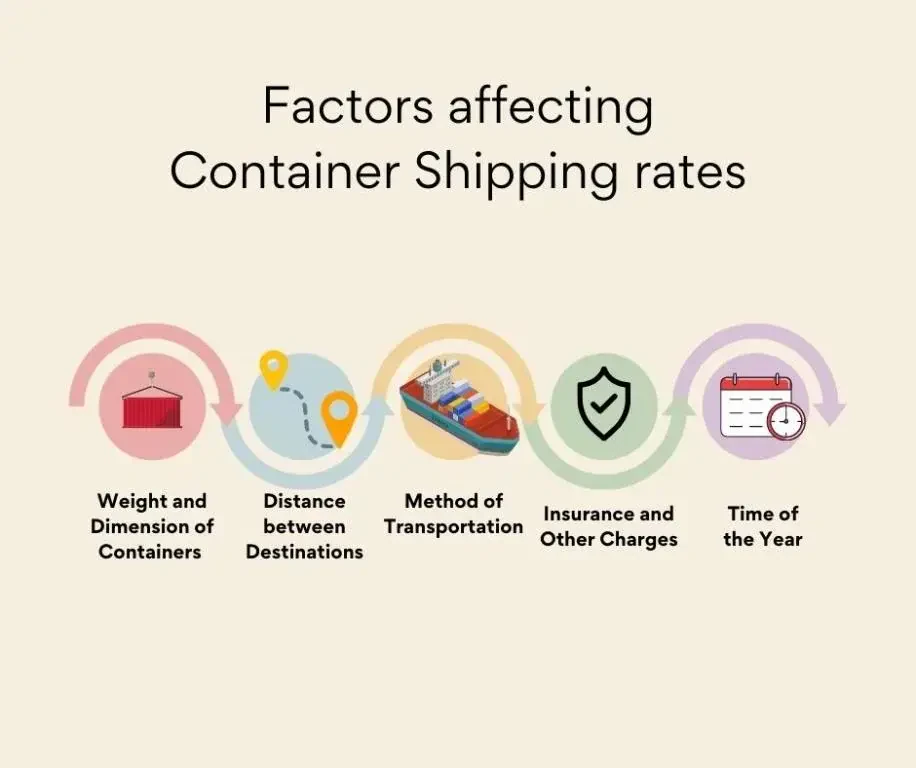
Factors affecting the cost of shipping containers overseas
- Weight and volume of cargo.
- While it may be a no-brainer, the bigger the volume and the heavier your shipment, the more expensive it will be to ship. The volume will also determine which type and how many containers you need and the trucks that will ship them to the ports, which also has a direct impact on the final cost.
- Transportation method.
- How do you ship it overseas? Your three main options for shipping a container overseas are via sea freight or air freight. However, remember that it’s not always possible to ship a container on a cargo plane. Regardless, ocean freight is the most common and cheapest overseas shipping option.
- The distance.
- The longer the distance between the ports (origin port and your destination country port), the higher the transport price.
- Time of year.
- Just like any other industry, the shipping industry has peak and off-peak seasons. January to February and August to September are the peak shipping seasons for containers. So, if you want to save money, avoid these months.
- Type of goods.
- Goods can be of different types. If you are hauling any special items overseas, like a car, boat, piano, or even fine art, the total cost of your shipment will be higher.
- Fuel rates and other charges
- As you know, the ships run on fuel, so the increase in fuel prices will increase the shipping price of containers.
- Speed of Delivery
- You have to pay more if you want fast delivery. Expedited shipping rates are usually higher.
- Insurance Options
- If you choose Insurance options for your containers, you must pay extra charges.
- Duties, Customs Clearance, and Other Taxes
- The international taxes and customs charges documents, as well as other documentation needs, will affect the shipping rates.
- Weather Conditions
- The weather condition also changes the shipping rates. Extreme weather conditions at sea make for more expensive deliveries.
Aside from these factors, any additional services will increase the shipping cost. These include, but are not limited to, insurance, packing/ unpacking, door-to-door delivery, and storage.
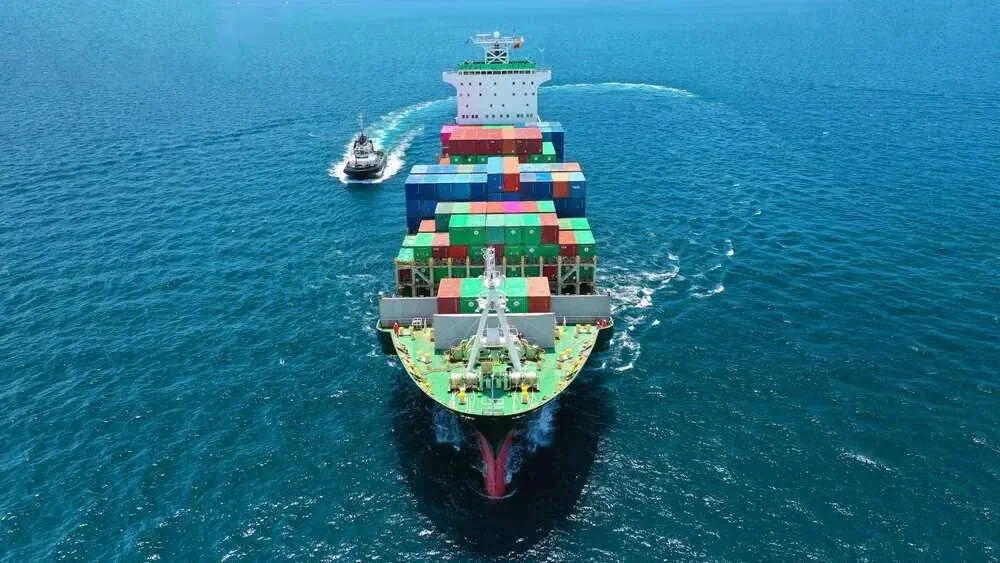
Shipping freight overseas - Advantages of using professionals
Relevant Statistics
- Over 95% of the world's traded goods are transported in shipping containers.
- The average time for a shipping container to travel from China to the United States is approximately 25 days.
- Close to 30 million containers are transported by sea annually, accounting for around 90% of global trade volume.
- The largest container vessels can carry over 20,000 twenty-foot equivalent units (TEUs) in a single trip.
- Approximately 98% of shipping containers are manufactured in China, making it the leading producer in the industry.
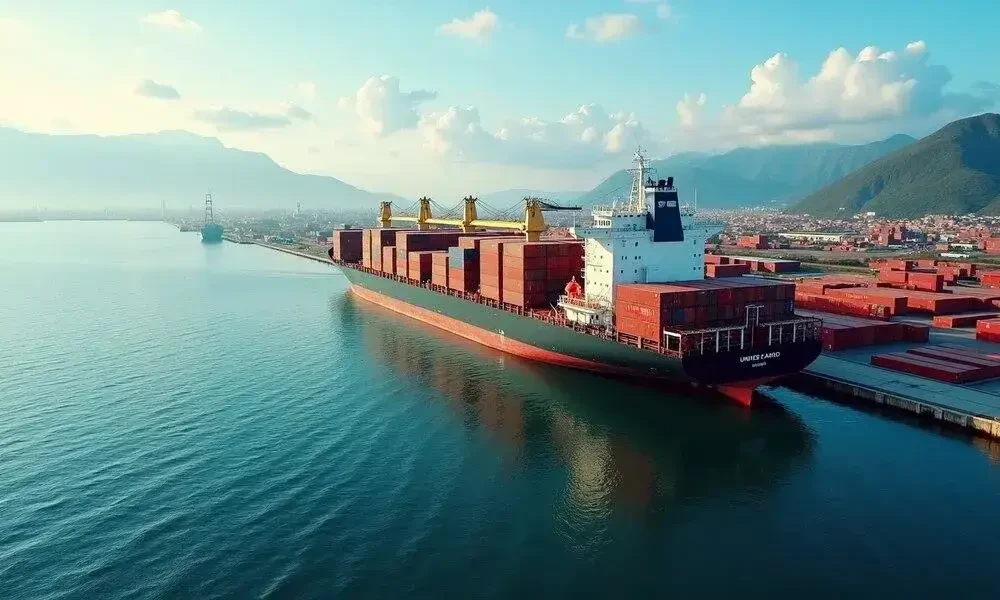
General Facts
- Shipping containers are large, standardized metal boxes used to transport goods overseas.
- They come in various sizes, with the most common being 20 feet and 40 feet in length.
- This can be loaded onto ships, trucks, or trains for transportation around the world.
- International hauling is designed to withstand harsh weather conditions and protect the cargo inside.
- They play a crucial role in global trade, facilitating the movement of goods between countries and continents.

What are the benefits of using a shipping container?
When you have to move a large volume of things over different countries, container shipping is the best way. The benefits of using this are as follows:
- Provides transportation at a low cost.
- High Security and low energy consumption
- Provides flexibility in goods transportation range.
- Fast speed of transportation.
- Worldwide Service.

How to Ship Overseas
- Packing items for overseas shipping needs a little expertise. It needs calculations and space management ideas. You must consult an expert or hire a moving company to do the job for you.
- You should use high-quality packing materials to wrap and box your things. Since it's a long way, we should always be careful. You should pack fragile items with extra care. Also, if you're using sea freight, try to use waterproof packaging for your things as the journey of the sea could face storms and waves.
- Load the container uniformly weight-wise to avoid any balance issues. Uneven loading of weight and handling may put containers at risk of tilt and damage to your things.
- If possible, use pallets. They help to keep your things secured.
- Bubble wraps and special wraps are highly suggested.
- Properly label your things so that it's easier to unpack them again.
- Keep constant contact with your shipping company until the shipment is complete. Track the location with the tracking number provided by the company.
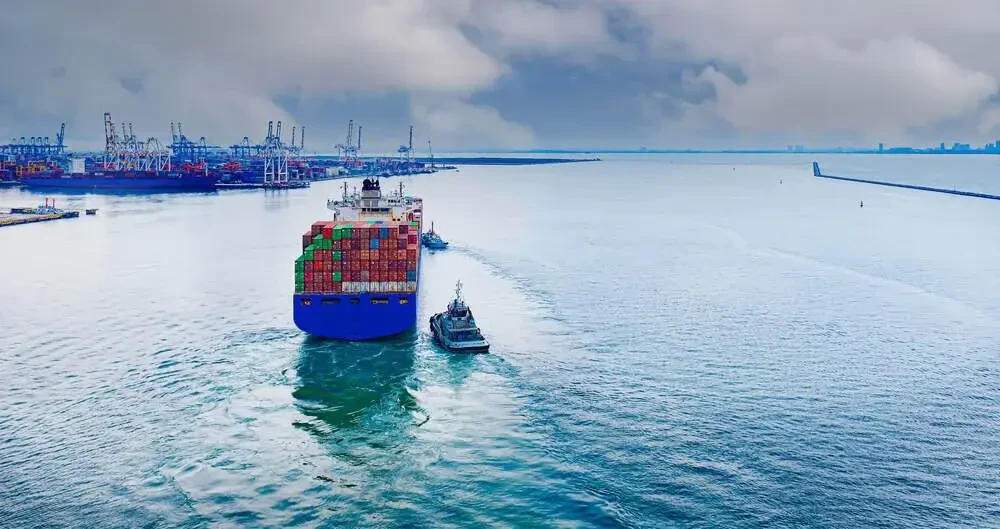
Freight container shipping internationally
Need help shipping a container overseas? Look no further than Three Movers for the job. Contact one of our overseas shipping experts by filling out our online form or calling the number at the top of this page. We have the best international moving container cost and an absolutely stress-free process. We can also help to ship your vehicles and cars through our partner company, A1 Auto Transport. We’ll provide you with your free, no-obligation estimate and craft a plan that meets your needs and budget.
Contact us at Three Movers today for tips on how you could save up to 20% on your next overseas relocation!
Frequently Asked Questions
Most people find it helpful to book their shipment at least three to five weeks before their preferred departure date. This gives time to secure the right container size, arrange pickup, and make sure all documents are in order. Booking early can also help you avoid delays during busy seasons and keep your shipping costs more predictable.


